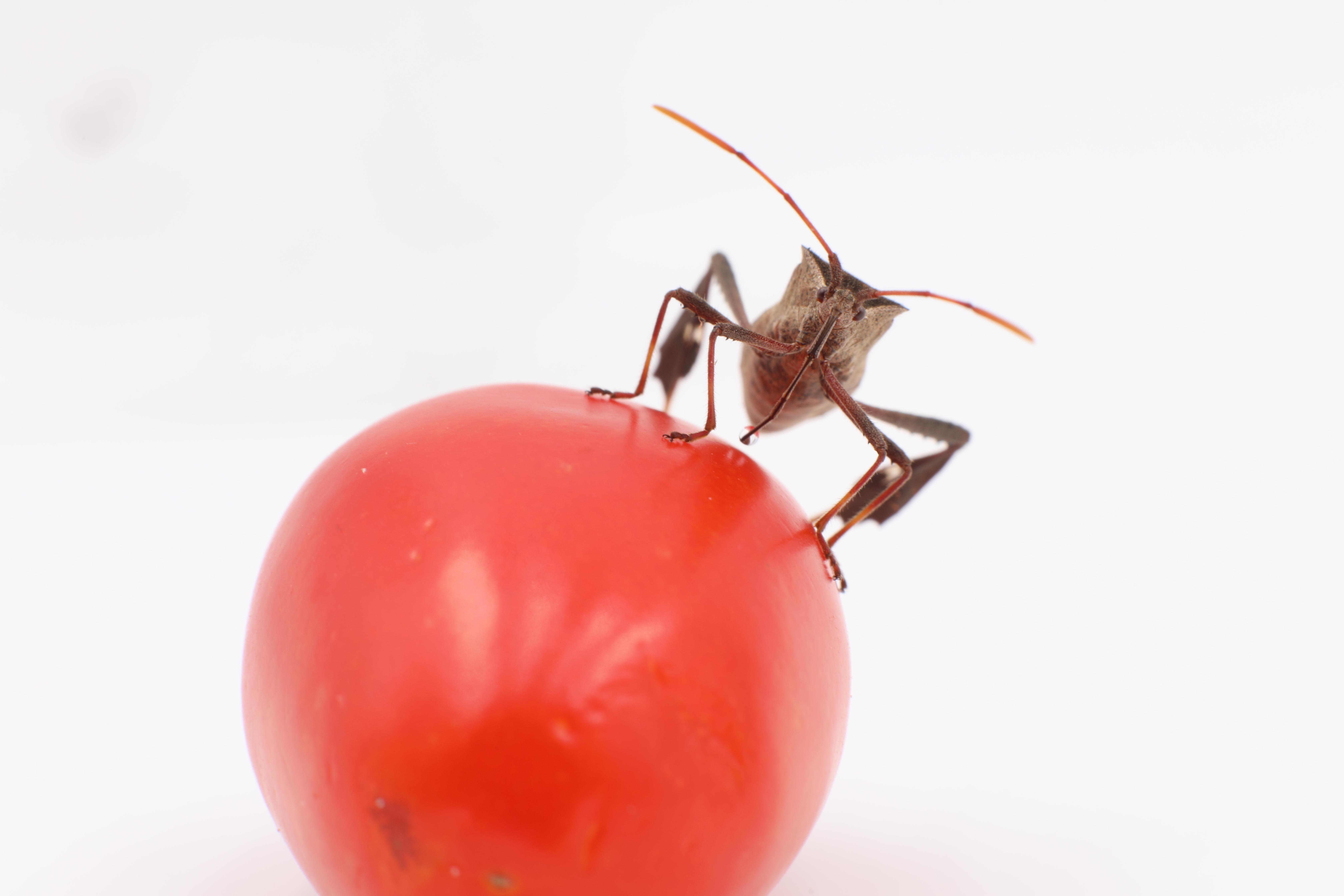
Image: The leaf-footed bug, Leptoglossus zonatus, on tomato
Mouthpart length and host choice in leaf-footed bugs
Supervisor: Professor Christine Miller
Throughout history, animals have encountered novel foods due to the expansion and contraction of species ranges. Today, human activities move thousands of organisms to new environments, especially plants and insects. When herbivores are exposed to novel plants, they may initially avoid them because they cannot eat or digest them. Plasticity in the shape and size of mouthparts can be a mechanism that allows herbivores to have access to new food items and eventually to thrive upon them. The initial stages of these interactions are essential to understand because they provide evidence on how organisms can overcome challenges that lead to the colonization of new niches. Further, host shifts can have cascading impacts on biodiversity, as these shifts increase trophic interactions and can led to speciation.
In this project, we will examine the capacity to quickly change mouthpart morphology to feed on different and even completely new foods. Our goal will be to test the extent to which mouthparts can developmentally respond to novel and varied food challenges within one generation via the process of phenotypic plasticity. The next step will be to test the consequences of developmental plasticity in mouthparts. For example, will the size of mouthparts developed when young dictate which foods adults can then feed upon and where they lay eggs? How does this change adult behaviour, and do these changes cascade through the generations?
We will partner with IITA Benin where scientists will help us collect these insects from fields, and the information we gather may help enhance food security in West Africa.
Type of work
We have applied for funding that would allow the student to travel to Benin in West Africa for two months to rear insects and run the experiments on-site, returning with the specimens to Cambridge for measurements of the insect cuticle, analysis, and writing. It will be valuable to know if applicants would like to travel to Benin (all expenses paid) as part of this MPhil, or if they would rather work on-site at Cambridge for the entire year.
We will bring three species of leaf-footed bug from Benin back to Cambridge rear them under highly controlled conditions. This experiment will allow us to control for food quality, only altering the depth of the physical barrier. The student will embed host plant seeds in agar on petri plates. The student will create two depths, one where the seeds are close to the surface, and one where they are under a deeper layer of agar, an approach already vetted. In our first project, we will determine the extent to which adult mouthpart length dictates later feeding preferences for seeds in shallow or deep agar. Second, we will randomly assign adult insects with shorter or longer mouthparts to seeds in shallow or deep agar. We will then measure survival and reproductive success.
Importance of the area of research concerned
Efforts have been underway to find effective strategies to manage insect pests with reduced reliance on chemical pesticides. A crucial part of this effort is to gain a deeper understanding of the biology of these insects and how they use their host plants. Such fundamental knowledge has been effective in other systems in influencing pest behaviour, distribution, and population dynamics for crop protection.
We will focus on pests of cowpea, the most important pulse in West Africa, where it provides the main source of dietary protein for humans.
In addition to helping guide environmentally friendly pest management practices, this work will also provide important scientific advances in understanding phenotypic plasticity and its consequences.
References
Allen PE, Cui Q & Miller CW (2021). Evidence of a rapid and adaptive response of hemipteran mouthparts to a physical barrier. Journal of Evolutionary Biology 34: 653-66
